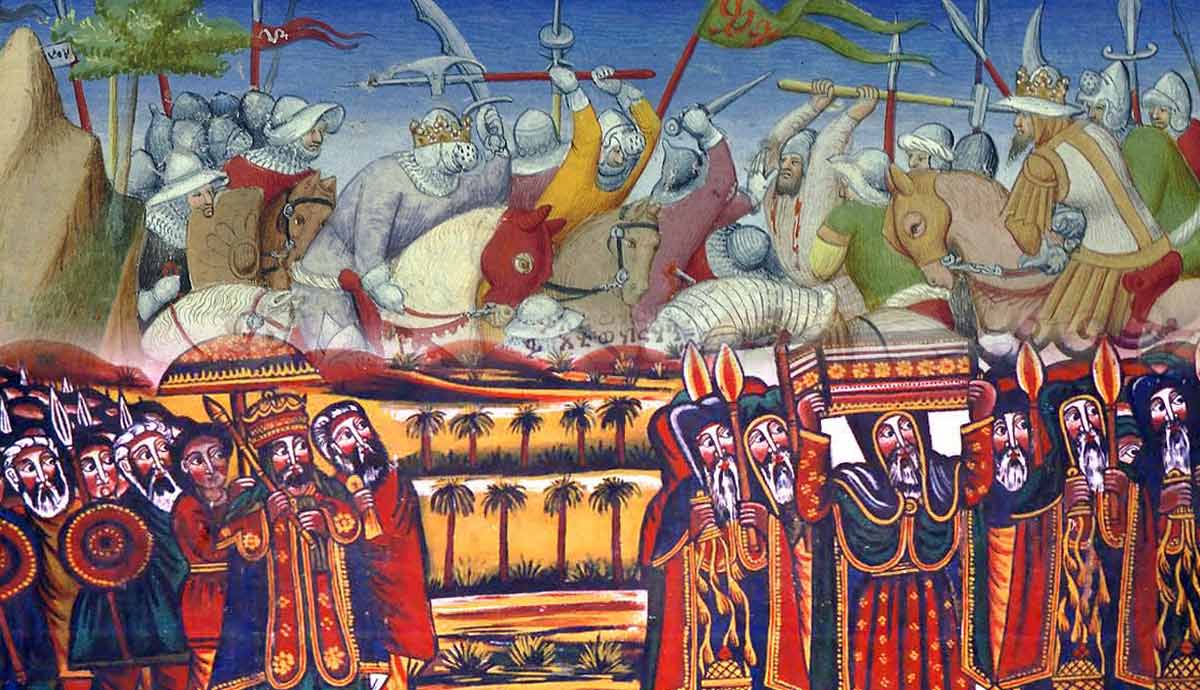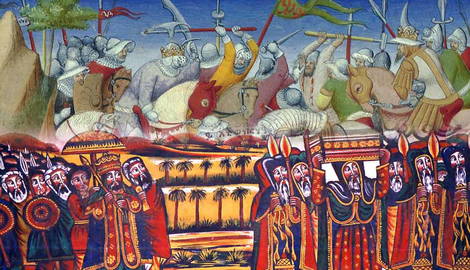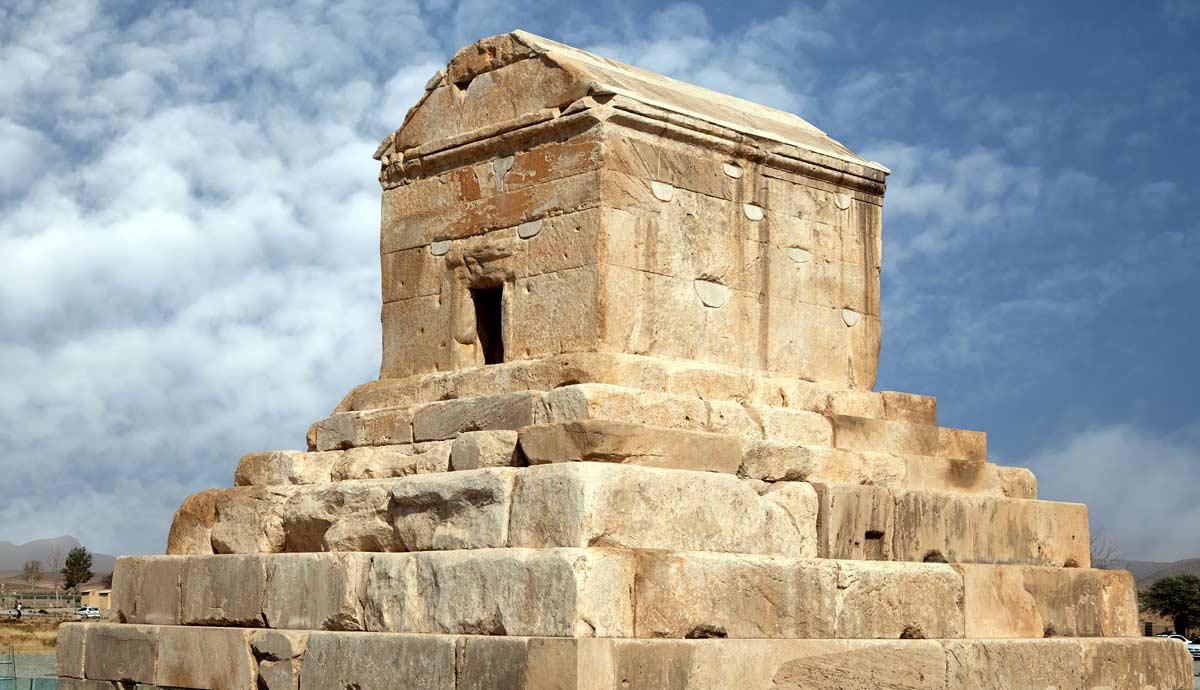
Medieval Ethiopia produced one of the longest-reigning dynasties anywhere in the world. The Solomonic Dynasty lasted from 1270 CE to 1974 CE, with many Ethiopians claiming it went back further to 982 BCE when Menelek I became the first emperor of Ethiopia. In 700 years, Ethiopia witnessed a transformation in trade, territory, and culture that created the modern nation we know today. The dynasty united ethnic groups to form one state with the same values and traditions. Although historians still have yet to determine what happened to begin the Solomonic Dynasty, we can combine the sources we have to create an image of what might have occurred.
Opposition to the Zagwe Dynasty

The Zagwe Dynasty ruled from 900 CE to 1270 CE. It was a relatively stable lineage until the 13th century when opposition began to gain power against the king. Although much of its centuries-long reign is well-recorded, the end of the Zagwe Dynasty is still a mystery for historians. The dynasty’s last emperor is even called Za-Ilmaknun, which translates to “the unknown” or “the hidden one” because later royal recorders completely removed him from history. Many historians have theorized that this ruler was Yetbarak, the son of former King Lalibela.
During the 1260s, the ruler of one of Ethiopia’s regions, Shewe, slowly started to gain power against the final ruler of the Zagwe dynasty. This leader, Yekuno Amlak, was supported by many Ethiopian saints and certain ministers, who were related to him on his mother’s side. A later monastic genealogy recorded the following story:
“‘Come, let me ask [lit: tell] you something,’ said Abuna Takla Hâymãnot to Yekuno Amlâk. ‘Who taught you [the scriptures]?’ He said to Abuna Takla Hâymãnot, ‘I learned the scripture(s) while I was in the house of Arbogenā. Abuna Yohannes of the Hidden taught me; he also told me that I will be king of Ethiopia.’”
In these lines, the power of Amlak’s religious support is evident. Yekuno Amlak’s power as the established leader of Shewe and his role within influential religious circles made him the perfect figure to oppose the final Zagwe king.
The Battle of Ansata

The map above shows the Zagwe Kingdom and the Shewe Sultanate, which Amlak controlled. As Amlak gained power and influence, he gained control of enough troops and resources to conduct a full-on attack on the Zagwe Kingdom. Like many other successful usurpers, Amlka timed his strength to match the weakness of the existing king before striking.
By 1270 CE, Amlak had built enough support to oppose Yetbarek more forcefully. He gained the collaboration of the Gafat, an ethnic group in Medieval Ethiopia, and from the sultanate of Shewa. This support gave Amlak an upper hand against the last Zagwe king, whose power was already dwindling with Amlak’s rise.
The story of the Battle of Ansata claims that after defeating the Zagwe army, Amlak pursued Yetbarek into the Church of Saint Qirqos at Ansata. Here, Amlak slayed Yetbarek, taking over the throne with violent force. Although some historians treat this event as fact, there is still debate about what happened that allowed Amlak to overthrow the Zagwe Dynasty. The Battle of Ansata may be one of the most epic battles we know barely anything about. The scrubbing of Yetbarek—or whoever the final Zagwe King was—from history has deliberately hidden the truth of what happened.
In other stories, the last King of Zagwe was Naakuto Laab, Yetbarek’s brother. He agreed to peacefully transfer power to Amlak after coming to terms with the fact that the usurpation of the Zagwe Dynasty was inevitable.
The Legends of Yekuno Amlak’s Ancestry

Although Yekuno Amlak succeeded in overthrowing the last Zagwe king, he needed to find a way to legitimize his claim to the throne, to not be overthrown himself. Enter the creation of an origin story that Ethiopians would continue to support for centuries.
Although Yekuno Amlak never personally claimed to have succeeded King Solomon, many records have promoted this claim as fact. The claim that Amlak was the direct male descendant of King Solomon pushed the idea that he was “restoring” the Solomonic Kingdom by overtaking the Zagwe Dynasty.
Amlak’s supposed ancestry became a legend and supported the long-lasting success of the Solomonic Dynasty, for over 700 years. Similar to how Arthurian legend affected Medieval England, the legends of Amlak’s lineage inspired an entire culture.
The Kebra Nagast

The Kebra Nagast is the first source to record the genealogy of the Solomonic rulers, and other stories have come out to support its claims. This story of lineage is an integral part of Ethiopian patriotism, with the 1955 Ethiopian Constitution even stating that the emperor “descends without interruption from the dynasty of Menelik I, son of Queen of Ethiopia, the Queen of Sheba and King Solomon of Jerusalem.”
The Kebra Nagast records Ethiopia’s national epic, a record that many Ethiopian Christians believe to be true. The book was written at least 700 years ago in Ge’ez, by Nebure Id Ishaq of Aksum. The text’s central story revolves around how the Queen of Sheba had a son with King Solomon — Menelek I. The story goes that in classical times, the Queen of Sheba visited Jerusalem during her reign, bearing many gifts for Solomon. During her visit, the pair conceived a child. On her return, the Queen of Sheba gave birth to their son, Menelek I, who grew up to be the first emperor of Ethiopia. Menelek I was the first Ethiopian ruler from the House of Solomon, which continued its lineage for thousands of years until the Zagwe Dynasty took over.
Chapter 95 of the Kebra Nagast explains the direct descent from King Solomon through the Kingdom of the Axumites to the Solomonic Dynasty. Within this story, the Zagwe Dynasty’s usurpers had a rightful claim to the throne. When Amlak overthrew the Zagwe Dynasty, he simply “restored” the throne to its rightful line.
The Kebra Nagast also documents the turn toward Christianity in Ethiopia. It is a source of pride for the people of Ethiopia, who have historically been dedicated to Christianity and its values throughout history, pinpointing the exact moment that the people turned towards the Christian god.
Ethiopian Orthodox Christianity

The Ethiopian Orthodox church supported Yekuno Amlak’s rise to power through his relationship with influential figures within the institution. During his reign, Almak’s loyalty to the church strained many foreign diplomatic relationships, especially with his Muslim neighbors. Amlak’s attempt to become an Abuna (bishop) for the church strained these friendships even more.
Amlak contributed significantly to the church during his reign. Historians credit him with the building of the Church of Gennete Maryam, where one can find the earliest datable wall paintings in Ethiopia. Moreover, his supposed descent from King Solomon created a story of Christian restoration, which supported the longevity of the Solomonic Dynasty.
The emperors who followed after Amlak also used Christianity to integrate the various ethnic peoples in Ethiopia into one nation, especially when they were acquiring new territories. The respect and importance that each emperor of the Solomonic Dynasty placed on the Ethiopian Orthodox church proved that it was one of the integral characteristics of Ethiopian society during this period.
Territorial Expansion

While Amalak attempted to create friendly relationships with his neighbors, Ethiopia was losing more and more territory and people to various Muslim sultanates by the 13th century.
By the 1310s, Amda Seyon I began to wage war in all directions, conquering borderlands and expanding Christian Ethiopian territory. His victory against Ethiopia’s Muslim neighbors established the power and stability of the new Solomonic Dynasty. Seyon’s success in military strategy within the North African region led to many later calling him the founder of the Ethiopian Empire. His integration of people into one community that shared a language, a religion, and economic successes, established a hegemony in the region that had not been seen before.
A little over 100 later, emperor Zara Yaqob continued this Solomonic tradition of territorial expansion. Yaqob consolidated the territorial acquisitions of previous rulers like Amda Seyon I into one state. He did this by constructing numerous churches and producing various laws on the specifics of Ethiopian Christian practice. Yaqob saw the strength the Solomonic Dynasty gained through its religious associations and used these to integrate territory under the same cultural values and, ultimately, under the same rule.
In the centuries that followed, Ethiopia gained and lost territory under the Solomonic Dynasty. The country transformed from the medieval region it was to the modern land it is now.
The Development of the Solomonic Dynasty

From ancient beginnings to recent history, the Solomonic Dynasty developed Ethiopia in many different ways. Under its various leaders, trade, religion, economy, and culture were all transformed, and multiple regions and people were integrated into one nation.
The Dynasty lasted over 700 years, ending when the Derg overthrew Haile Selassie during the 1970s, turning the country into a dictatorship. Although the Solomonic Dynasty’s history has ended, the legend of its emperors and their lineage remains an integral national story.









